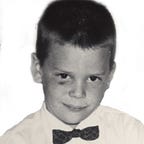When a piece of art migrates from a debut medium to a reimagined medium and then a re-reimagined medium, the perspective becomes kaleidoscopic, each new impression colored by the choices of the next interpreter. The Life of Pi stage production (2021), based on the book by Yann Martel (2003), and then reimagined in movie form by Ang Lee (2012), magically extends this ‘artinerary’ into a satisfying theatrical expression of the original artistic intent.
The book was a magically realistic and harrowing tale of survival by a boy marooned at sea on a small lifeboat with a Bengal tiger. Told in the first person, it had an interiority that unfolded like a tall tale being confided. Told cinematically by Lee, the experience had an observed surrealism that enveloped viewers like a spell. Presented theatrically, by a team of actors and puppeteers, the play feels like a campfire story projected, believe it or not, against a cave wall.
It may be cheating to say that theater is the ideal medium for Pi to be served, given the emotional momentum the piece acquired via those earlier embodiments. But this production, which just ended at the American Repertory Theater in Boston, following an original production in London (2021) and preceding a Broadway run, took the story to new places.
On our way to the ART, my partner mused about how the ART might bring the animals in the story to life on stage. Before the show, a table of puppet prototypes was on display in the lobby for audience members to break the third wall over a glass of wine. Slipping your hand into a meerkat while it as still a mere puppet was a wonderful teaser for the magic ahead.
Years ago, I was chided by friends that I’d taken to see an all-puppet version of the ill-fated Shackleton expedition to the South Pole. Think dead, frozen puppets. But since then, the wonderful staging of physically animated characters in The Lion King, Warhorse, and the daemons of His Dark Materials left me hopeful. The Pi production did not disappoint, combining theatrical performance, puppetry, and multimedia visual effects in remarkably cohesive and compelling ways.
The theatrical story unfolds as Pi recounts his tale to a couple sent to interview him following his rescue. They include a Japanese insurance adjuster hoping to produce a fact-based affidavit about the ship’s sinking that put Pi in peril. The other is a more emotionally available immigration official from Winnipeg, the destination for Pi, his family, and the menagerie for which Pi’s zookeeper father had booked passage, all perished when the ship was lost in a storm.
They find Pi in a near-spiritual euphoria, the trauma he experienced while adrift for over 250 days fragilely suppressed as he processes the ordeal. The only real way for him to tell the story about this most existential of tests is through a zealous testament of what he saw because he was there, and it happened to him. As the story undulates between his recalled experiences with both human and animal survivors fact and allegory blur, buoyed by the imaginative ART staging that effortlessly moves the narrative between land and sea, testimony and reverie.
In years to come this expansive piece will be staged with clever workarounds by companies of all sizes and budgets. But the production values realized by this purpose-built set — and the precision direction of every actor, puppeteer, and stagehand moving in unison on stage over the two acts — will be hard to surpass. A single hiccup, where a prop on an orbiting pedestal, off by an inch, was tweaked by an element rising out of the stage, underscored how thousands of other cues unfolded flawlessly.
Given all the recent cultural noise about how metaverses might become the next experiential plateau for our mediated lives, it was especially satisfying to transcend the world of meta-maybe to enjoy this multiverse onstage in real-time.
